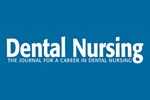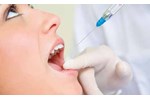
The new Care Quality Commission Standards
The Care Quality Commission has published its proposed new Fundamental Standards. Are they a ‘new start’ or more of the same?

The Care Quality Commission has published its proposed new Fundamental Standards. Are they a ‘new start’ or more of the same?

A range of leadership and management skills are needed to fulfil the decontamination lead role effectively. The decontamination lead should work as part of the management team alongside the Registered Provider and the Registered Manager. Essentially, the decontamination lead oversees compliance with

Dental practices are areas of high risk of cross infection if standards for infection prevention and control are not met. This article discusses the accountability of dental care professionals and gives examples of the sanctions that DCPs may face if they fail to protect their patients

Leavy P, Templeton A, Young L, McDonnell C (2014) Reporting of occupational exposures to blood and body fluids in the primary dental care setting in Scotland: an evaluation of current practice and attitudes. Br Dent J 217: E7

Practices need to prevent and treat microbiological contamination of water in dental unit water line systems to minimise the risk of infection

Harmful bacteria can colonise many areas, including furniture, fittings and the physical structure of the practice building. Practices should carry out risk assessments, set up cleaning schedules and record when items are cleaned to reduce potential risks to patients and staff

Clinical treatment coordination encompasses the role of a treatment coordinator with that of an extended skills dental nurse, paving the way for dental nurses to become treatment providers in their own right. In this article, Rachel Hughes tells us her story and how it was all made possible

Practices need to prevent and treat microbiological contamination of water in dental unit water line systems to minimise the risk of infection. A field study involving four UK dental practices examined water quality in these systems and the effects on this of biocides and flushing

Nearly every dental surgery within the UK uses decontamination equipment, such as sterilizers and ultrasonic baths, to clean and sterilize instruments. Since the late 1990s, there has been an increased focus on the standards associated with their use. Wayne Spencer looks at what is needed to satisfy

So much of our current learning feels so repetitive and routine that our brains pay less attention to it. Presenters or tutors do most of the talking and audiences do most of the listening. In this article, Claire Deegan looks at strategies for increasing engagement in education and learning

Infection control is based upon the principle that transmission of infectious diseases will be prevented when any of the six steps in the chain of infection are broken or interrupted. In this article, Mark Cole, discussed the six steps of infection and how they can be interrupted or broken

Dental healthcare workers can be exposed to a wide range of airborne contamination. The use of a high-performance air cleaning system is a cost-effective, efficient and reliable method for reducing the exposure to contamination in a dental practice

Reports of allergic reaction to natural rubber latex (NRL) are not uncommon in dentistry. To safeguard patients and coworkers, dental nurses must recognise patients and workers at risk for NRL allergies, identify the associated symptoms, and encourage thorough diagnostics and management.

